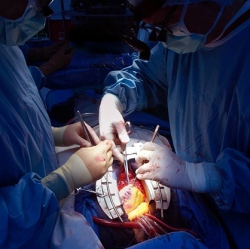
Patients needing surgery to reconstruct body parts such as noses and ears could soon have treatment using cartilage which has been grown in a lab. The process involves growing someone’s cells in an incubator and then mixing them with a liquid which is 3D printed into the jelly-like shape needed.
It is then put back in an incubator to grow again until it is ready. Researchers in Swansea hope to be among the first in the world to start using it on humans within three years.
"In simple terms, we’re trying to grow new tissue using human cells," said Prof Iain Whitaker, consultant plastic surgeon at the Welsh Centre for Burns and Plastic Surgery at Morriston Hospital.
"We’re trialling using 3D printing which is a very exciting potential modality to make these relatively complex structures.
"Most people have heard a lot about 3D printing and that started with traditional 3D printing using plastics and metals.
"That has now developed so we can consider printing biological tissue called 3D bio-printing, which is very different.
"We’re trying to print biological structures using human cells, and provide the right environment and the right timing so it can grow into tissue that we can eventually put into a human.
"It would be to reconstruct lost body parts such as part of the nose or the ear and ultimately large body parts including bone, muscle and vessels."
